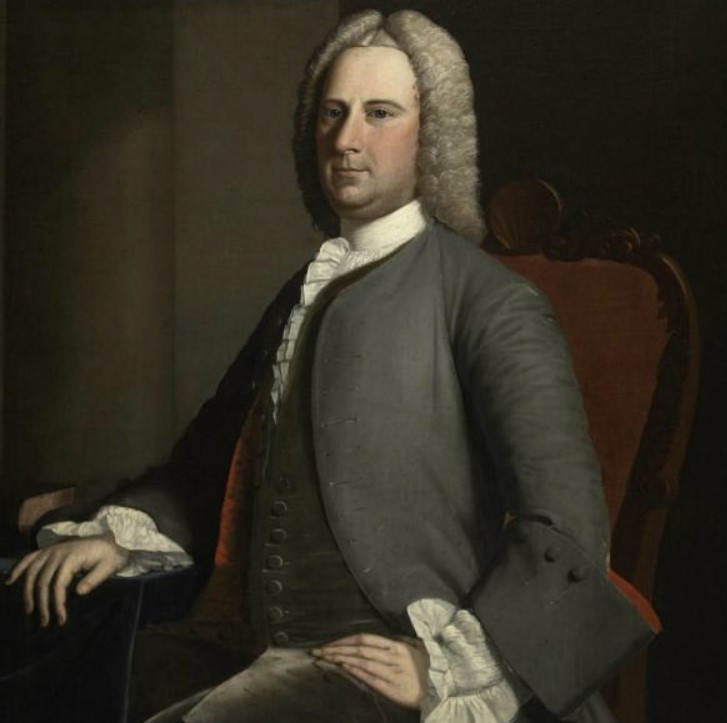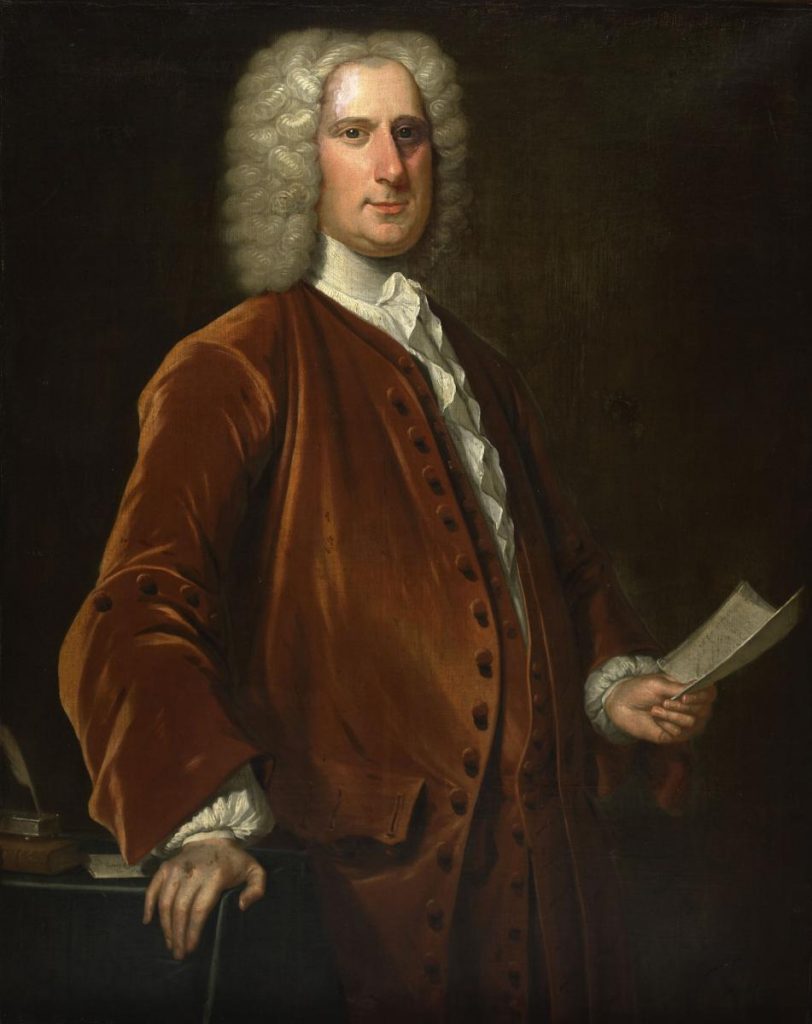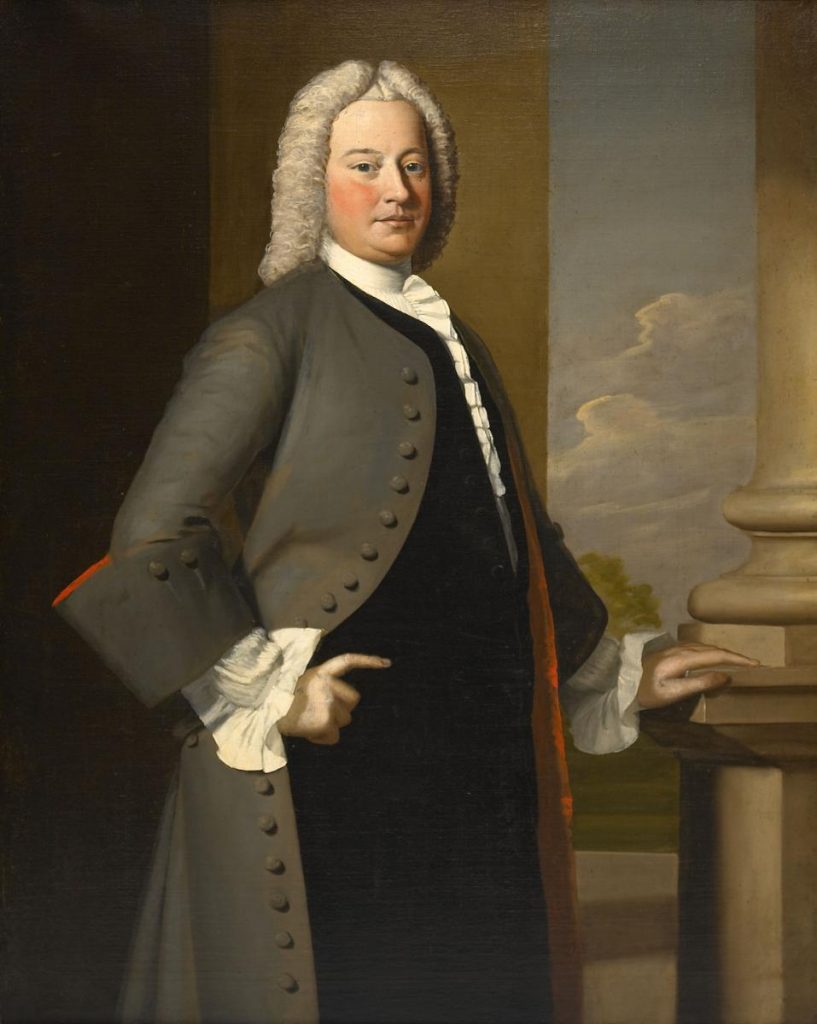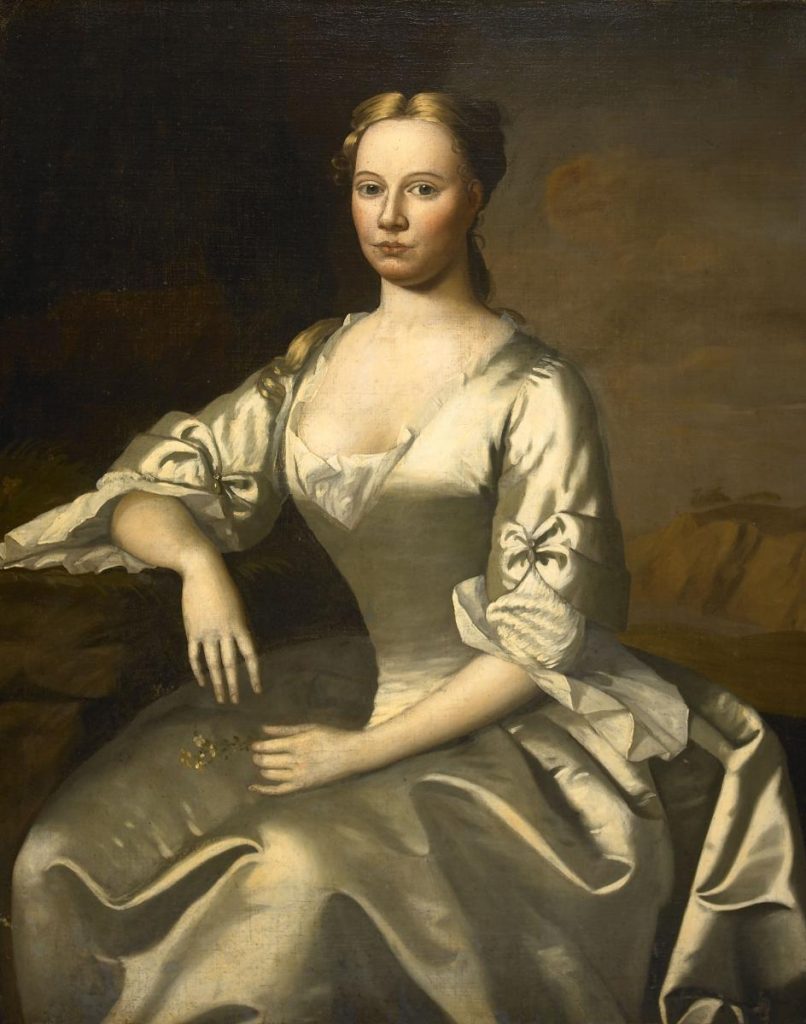
07 Apr Redwood History: Henry Collins, 1699-1765
April 7, 2016, 10:46 am
Two portraits of Henry Collins hang in the Harrison Room. In one he is composed, gentlemanly, sitting at a table with one hand on his leg. He is serious, gazing out past the viewer with the haughty self-assurance that portraits lend their subjects. In the other, he is playful; the hint of a smile on his face as he looks directly at the viewer. He is standing near a table that is covered in books, and in his hands he holds a letter – showing him to be a man of means and intellect. Aside from his donation of land for the Redwood Library, what do we know about Henry Collins?
He was born in Newport on March 26th, 1699. His father, Arnold Collins, was a silversmith; he designed and engraved the seal of the Colony of Rhode Island, which we still use today (the anchor and the motto “Hope”). At an early age Henry was sent to England to study the mercantile business. While in England, young Collins developed a taste for literature and the arts that would remain with him the rest of his life.

Henry Collins by John Smibert, c. 1736.
Back in America, Collins started a cordage manufacturing business with Ebenezer Flagg, a young man who had married Collins’ niece, Mary. Interestingly enough, Ebenezer and Mary Flagg’s son, Ebenezer Jr. became a Major and was killed in battle in 1781 for leading African American soldiers. He was a great-great- great granduncle of Cornelius Vanderbilt IV, son of Cornelius Vanderbilt III and Grace Wilson. It was due to Flagg’s lineage that Vanderbilt was admitted to the Rhode Island Society of the Cincinnati.
As his business grew, Henry became interested in civic affairs, and was involved with a few very important locations in Newport history. In addition to donating the land for the Redwood Library, and serving as a proprietor, Collins was also a proprietor of Long Wharf, and was responsible for its extension. He is also one of two members responsible for the erection of the Seventh Day Baptist Meetinghouse, the oldest of its faith in the United States.
As well as using his wealth to support and expand the town, Collins was a major patron of the arts, and supported many local artists like Feke, Stuart and Smibert. Years later Dr. Benjamin Waterhouse would dub him “the Lorenzo di Medici of Rhode Island”. Unfortunately, Collins’ business went bankrupt in the 1760s, mainly due to trade difficulties caused by the Seven Years’ War, as well as stricter enforcement of the British Navigation Acts during this time.

Ebenezer Flagg by Robert Feke, c. 1749.
Having no money, Henry Collins lost his farm and house on Washington Street to George Rome, the agent of his London creditors. After losing his property, Collins moved in with his business partner, in the house he had given the Flaggs when they married. Ebenezer Flagg died in 1762. Henry Collins died at the end of April, 1765, and is buried in an unmarked grave in the Flagg family plot at the Common Burial Ground.
When the British evacuated Newport in 1779, Collins’ original property was confiscated from George Rome. In 1780, the house on Washington was torn down and the wood used for fuel by the townspeople. It seemed Henry Collins couldn’t help but be helpful.
After the death of her husband and uncle, Mary Ward Flagg sold her house to Robert Lillibridge, who turned it into Pitt’s Head Tavern, where it was a popular Washington Square pub for many years. The building has since been moved twice, and now stands at the northwest corner of Second and Bridge Streets.

Mary Ward Flagg by Robert Feke, c. 1748.
Want to know more about Henry Collins, or early Newport? Come to the Redwood and take a tour, or make a reference appointment! We have plenty of reading material on the subject if you’d rather study up at home, so what are you waiting for? Let us help you discover Newport’s amazing history.

Sorry, the comment form is closed at this time.